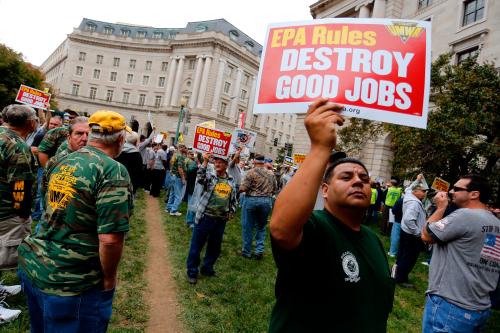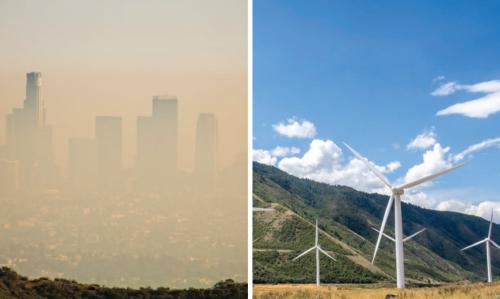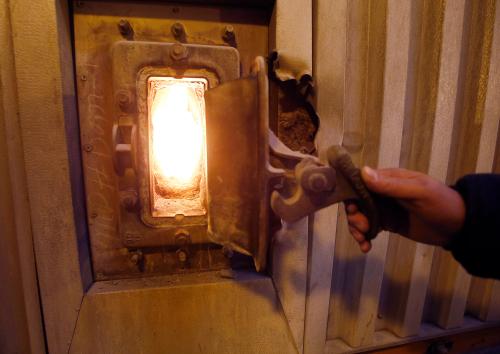The United Nations’ Conference of the Parties (COP22) in Marrakech on November 7-18, 2016, pressed ahead on the daunting climate agenda, trying to make more concrete their Paris (COP21) commitments. The meetings came on the heels of some rare successes: ratification of the historic Paris accord; a climate deal for aviation; and an agreement to phase out harmful hydrofluorocarbons. But Donald Trump’s election victory in the United States deflated much of the optimism because of his pledged to renege on the Paris accord and withdraw U.S. support for cutting carbon emissions.
Trump’s victory has indeed made the critical agenda of protecting our planet that much more difficult, at least for the present. But the crucial question is whether the emerging U.S. position on climate action will permanently set back momentum and action. We doubt this—mostly on pragmatic grounds.
A crucial question concerns the future of fossil fuels. Worldwide, more than two-thirds of electric power generation relies on fossil fuels (coal, natural gas, and petroleum), more than two-thirds of which is coal (see Figure 1). Even in the U.S., one-third of power generation is still based on coal. But coal power production in the U.S. is on its way out as power plants are being shut down for health reasons. Also, natural gas production in the U.S. is at an all-time high, and coal plants cannot compete with low-cost natural gas. The U.S. has come too far in cleaning up its air and water to revert to polluting technologies in unbridled coal and steel production that cause asthma, cancers, and loss of productivity. Similar concerns exist in Germany, France, as well as China and India where the desire for electricity is being tempered by deadly smog, pollution, and health effects.
Figure 1: World electricity generation by fuel (2012, percent of total)

While Trump and other Republicans have taken the view that climate change is a hoax, even as it flies in the face of scientific evidence and the views of the vast majority of scientists. The latest findings add fresh urgency for action: the rise of carbon dioxide in the atmosphere over the past half a century; the last 16 of 17 years being the warmest on record; intense floods, storms, droughts, and heat waves linked to global warming; and much of the Arctic Ocean temperatures are currently peaking at an extreme 20 degrees Celsius warmer than normal for this time of the year. The weight of all this evidence will be hard for the new administration to ignore.
The U.S. holds many of the keys to technological breakthroughs: higher-efficiency, cleaner fuels; longer-range electric cars; safer, smaller, self-driving cars; drones; robots; energy storage; and renewable energy. These are good for business, for climate change, and for better living. U.S. citizens want clean air and water. Opportunities for environmentally-friendly business are growing. The case for business opportunity and healthier living will likely be more persuasive than the argument for greenhouse gas reduction.
To create millions of jobs while maintaining a healthy environment, the only path going forward is through high tech, creativity, innovation, conservation, and efficiency in energy and production. In successful and growing states like California and New York, most people did not vote for Trump. He was elected by the unhappy Rust Belt population who had lost their steel, coal, and automotive jobs. Their old jobs are not coming back, and new avenues must be opened—in the U.S. and worldwide.
The way to sustaining economic growth globally has to be environmentally friendly, therefore also low-carbon and efficient. Having realized the devastation from air and water pollution, China and India, the fastest-growing large economies, are keen to adopt cleaner energy. Germany has been a leader in decoupling greenhouse gas emissions from economic growth. More than a hundred nations have ratified the Paris accord. The Marrakech climate conference expressed the deep fears and strong commitments of the global leadership. For a new U.S. administration, the forces for a sustainable planet will be hard to resist.
The U.S. has been instrumental in achieving the recent climate accords and breakthroughs. The U.S. has also been a powerhouse in developing technologies for clean energy, clean transport, and clean water. That role is needed now more than ever as new evidence from the World Meteorological Organization warns that global warming in 2016 (over the pre-industrial average) is likely to break 1.2 degrees Celsius, dangerously close to the 1.5 degrees Celsius limit set in Paris.
COP 22 was rightly fearful that a Trump administration would derail the delicate progress on climate change. But faced with scientific, political, economic, and environmental forces, its stance on climate change will likely end up being reasonable. Pragmatism in the face of the momentum created by global leaders should ultimately prevail.
The author acknowledges the collaboration on the subject with Vinod Thomas of National University of Singapore.






Commentary
Climate accord in the balance
November 29, 2016